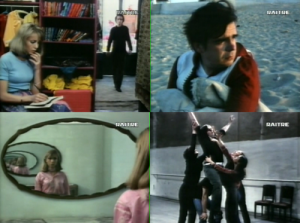Written for Sight and Sound‘s blog in July 2011. — J.R.
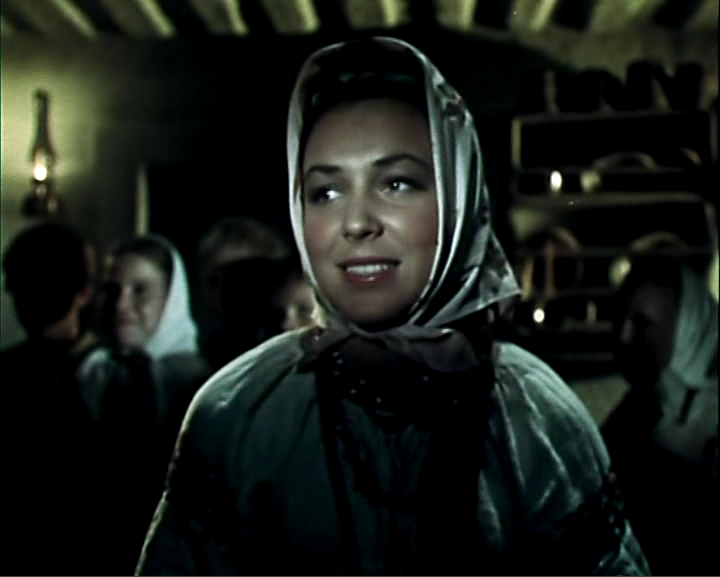
Not exactly a film festival or a conference in the usual sense, Il Cinema Ritrovato has many of the benefits of each without their professional drawbacks -– namely the frantic boom-or-bust atmosphere promulgated by the entertainment press at Cannes, and the relative dullness and institutional oppressiveness of a long succession of academic papers.
A relaxed yet intense eight-day bash devoted to film restorations, Il Cinema Ritrovato is held over some of the hottest days of the summer in the oldest university town in Europe, and sponsored by one of film restoration’s leading institutions, the Cineteca Bologna, which boasts the rejuvenation of Charlie Chaplin’s works among its achievements. Frequented chiefly by teachers, students, archivists, programmers, film historians and various others involved with restoration (such as people working for various DVD labels), the events are usually split between three auditoriums in the daytime –- although this year a fourth screen was added, making for many more choices as well as conflicts -– followed by huge, free outdoor screenings for everyone in the Piazza Maggiore every evening.
Whether the individual attractions are populist (among the Piazza restorations this year were Nosferatu (1922) and The Phantom of the Opera (1925) with full-scale orchestral -– and in the latter case vocal -– accompaniments, Les Enfants du Paradis (1945), the 1940 Thief of Bagdad and Taxi Driver (1976) or more specialized (some of this year’s retrospective subjects were Boris Barnet, Albert Capellani, early Howard Hawks, Elia Kazan and educational documentaries by Eric Rohmer, Maurice Tourneur and Conrad Veidt), the opportunities to reevaluate film history are plentiful. Read more
From the Chicago Reader (May 11, 2000). — J.R.
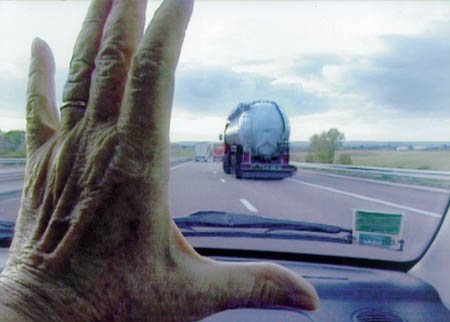
The Gleaners and I
Rating *** A must see
Directed and narrated by Agnes Varda.
Documentaries are a discipline that teaches modesty. — Agnes Varda, quoted in the press notes for The Gleaners and I

There’s a suggestive discrepancy between the French and English titles of this wonderful essay film completed by Agnes Varda last year. It’s a distinction that tells us something about the French sense of community and the Anglo-American sense of individuality — concepts that are virtually built into the two languages. Les glaneurs et la glaneuse can be roughly translated as “the gleaners and the female gleaner,” with the plural noun masculine only in the sense that all French nouns are either masculine or feminine. The Gleaners and I sets up an implicit opposition between “people who glean” and the filmmaker, whereas Les glaneurs et la glaneuse links them, asserting that she’s one of them.
Gleaners gather up the leftovers of edible crops — grain, fruit, vegetables — after the harvesters are finished with their work. Varda la glaneuse films what other filmmakers have left behind after their harvesting. The link between the two activities is made graphic at one point when Varda gleans a potato with one hand while filming it with the other. Read more
A 2005 essay commissioned by Criterion for their DVD of Eclipse. — J.R.
Your vigilance as an artist is an amorous vigilance, a vigilance of desire.
— Roland Barthes to Michelangelo Antonioni, 1979
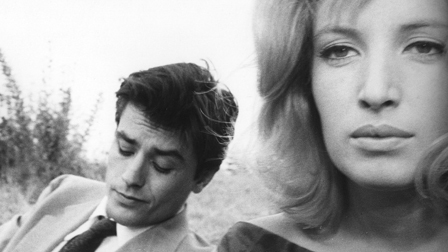
It’s lamentable that Michelangelo Antonioni, one of the most fashionable vanguard European filmmakers during the sixties, has mainly been out of fashion ever since. Part of this may be due to the sixties themselves — an era of artistic innovation when making ambitious films about the zeitgeist was still considered both possible and desirable — and all they’ve come to represent in ensuing decades. It seems that the curiosity and metaphysical doubts about the world, which resemble at times agnosticism about reality itself, are more easily tolerated when the glamour of that world is more readily apparent.
This was a time when intellectual activity about the zeitgeist could be debated, if not always welcomed, with Godard and Antonioni the two most commanding figureheads. L’eclisse (1962) appeared the year after Chronicle of a Summer, Last Year at Marienbad, and Paris Belongs to Us, the same year as The Exterminating Angel and Vivre sa vie, and the year before Contempt and Muriel — a period, in short, when large statements and narrative innovations often came together. Read more
From Monthly Film Bulletin, Vol. 42, No. 501, October 1975. — J.R.

Smile
U.S.A., 1974Director: Michael Ritchie
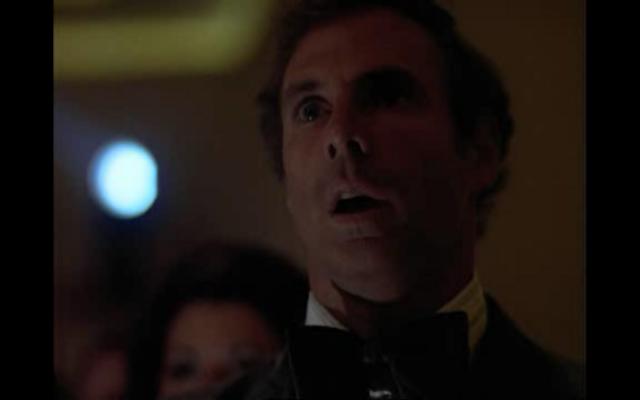
Thirty-three high school girls arrive in Santa Rosa, California, to compete in the annual Young American Miss Pageant. While the girls rehearse their individual and collective performances and are interviewed by a panel of judges — including former pageant winner Brenda DiCarlo [Barbara Feldon] and car dealer “Big Bob” Freelander [Bruce Dern], who codirect the event – Brenda’s husband Andy [Nicholas Pryor], a heavy drinker who runs a trophy shop, derides the silliness of the pageant and Freelander’s son, “Little Bob” [Eric Shea], takes orders from his friends for Polaroid nude snapshots of the girls. Professional choreographer Tommy French [Michael Kidd] arrives to train the girls in dance routines, “Little Bob” his caught with his Polaroid while the girls are undressing, a nude snapshot is confiscated by the police, and he is taken to see a psychiatrist by his father. Andy complains to “big Bob” about his sexual problems with Brenda, and is reluctantly persuaded to attend the Exhausted Rooster Ceremony (for local men who reach the age of 35) that night, the second evening of the pageant. Read more
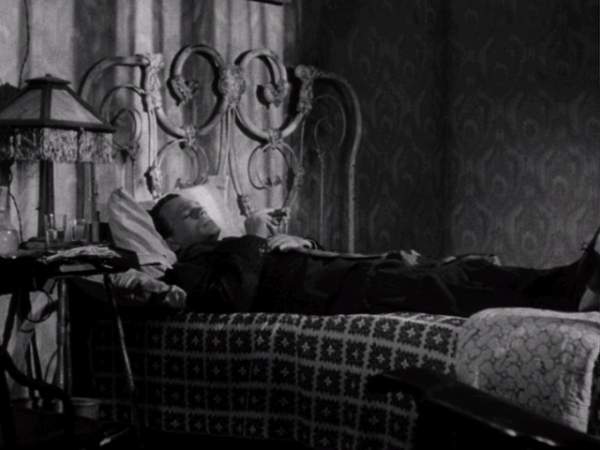

For me, the most valuable single piece of film criticism by François Truffaut — the one that has taught me the most — is a fairly early one, “Un Trousseau de fausses clés,” about Alfred Hitchcock, that appeared in Cahiers du Cinéma no. 39, octobre 1954. I first encountered this article in an English translation (“Skeleton Keys”) that appeared in Film Culture (Spring 1964), then in Cahiers du Cinéma in English No. 2, 1966. I find it far more ingenious as well as useful as criticism than Truffaut’s over- fetishized “Une Certaine Tendance of Cinema Française,” and the part I remember best (I don’t have a copy handy, but trust my memory on this) is a detailed analysis of Hitchcock’s Shadow of a Doubt in terms of “rhyming” shots and scenes, such as the two reproduced above. Many of these visual/ thematic rhymes involve the film’s two Charlies, a serial murderer of women (Joseph Cotten) and his young and beloved niece (Teresa Wright).
This is an essay that clearly helped to spawn Godard’s own best (and most detailed) work of film criticism — “Le cinéma et son double,” about Hitchcock’s The Wrong Man — as well as the structure of doubling shots and scenes in Rivette’s Céline et Julie vont en bateau. Read more
From the Chicago Reader (February 18, 2005). — J.R.

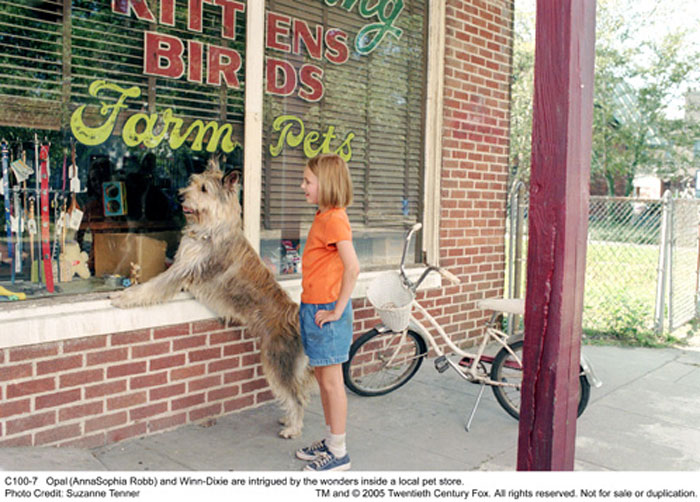
Uncle Nino
** (Worth seeing)
Directed and written by Bob Shallcross
With Joe Mantegna, Pierrino Mascarino, Anne Archer, Trevor Morgan, and Gina Mantegna
Because of Winn-Dixie
** (Worth seeing)
Directed by Wayne Wang
Written by Joan Singleton
With AnnaSophia Robb, Jeff Daniels, Cicely Tyson, Dave Matthews, and Eva Marie Saint
An uninvited guest joins an already stressed household, causing pandemonium and upsetting the neighbors as well. The preoccupied, absentminded father assumes this obstreperous if good-natured invader is visiting only temporarily, but on and on he stays, irritating almost everyone apart from the young daughter. Eventually the interloper wins everyone over and brings them all together.
That’s the familiar plot of not one but two current commercial releases, both wholesome family pictures. The visitor in Uncle Nino, which opened last week, is the title hero (Pierrino Mascarino), an elderly Italian peasant with a minimal knowledge of English who flies to the U.S. to visit the family of his nephew Robert (Joe Mantegna) after his brother, Robert’s father, dies. The visitor in Because of Winn-Dixie, which opens this week, is also the title hero, a stray dog in a small town in southern bayou country that’s taken in by the ten-year-old heroine, Opal (AnnaSophia Robb), the daughter of a Baptist preacher (Jeff Daniels). Read more
Film Difficult Becomes Popular
It’s interesting to see how some of the most difficult and challenging examples of art cinema have become increasingly popular over the past decade. Back in the 60s and 70s, Robert Bresson was virtually a laughing-stock figure to mainstream critics, and someone whose films characteristically played to almost empty houses. Yet by the time that he died, a retrospective of his work that circled the globe was so successful in drawing crowds that in many venues — including Chicago’s Film Center — it had a return engagement. Much the same thing has happened with Andrei Tarkovsky — another uncompromising spiritual filmmaker, and one whose films are even tougher to paraphrase or even explain in any ordinary terms.
I’m just back from a trip to the east coast where I was gratified to find, when I turned up to introduce a screening of Jacques Rivette’s 252-minute L’amour fou (1968) in Astoria’s Museum of the Moving Image, that the film was playing to a nearly packed house. (Incidentally, this galvanizing love story about the doomed relationship between a theater director and his wife, played by Jean-Pierre Kalfon and Bulle Ogier, has never looked better to me, though I’ve been a big fan since the early 70s.) Read more
Excerpted from Movie Wars: How Hollywood and the Media Limit What Films We Can See (A Cappella Books, 2000).From the Chicago Reader (November 17, 2000). — J.R.
Nowadays the line between journalism and publicity is often blurred, and one common, systematic method of blurring it is the movie junket. Generally a studio flies journalists to a location where a movie’s being shot or to a large city where it’s being previewed, puts them up at fancy hotels, then arranges a series of closely monitored interviews with the “talent,” most often the stars and the director. The journalists are expected to go home and write puff pieces about the movies that run in newspapers and magazines as either reportage or as a form of film “criticism.” If the journalists don’t oblige — and sometimes obliging entails not only favorable coverage but articles that emphasize what publicists want emphasized and suppress what they want suppressed — then the studios won’t invite them on future junkets.
There are probably more of these articles about new or forthcoming movies in newspapers and magazines than any other kind, and many entertainment writers — including plenty who double as film reviewers — make a profession out of these junkets. Read more
From Film Comment (September-October 2011). — J.R.
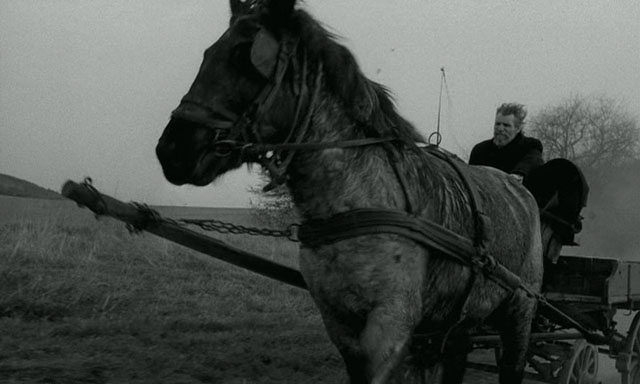
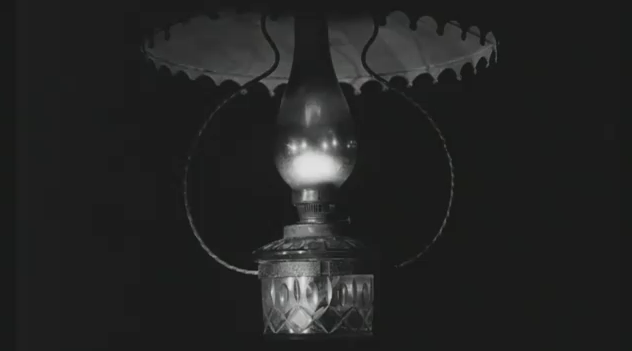
Recalling the incident in Turin that reportedly occasioned Friedrich Nietzsche’s final breakdown into madness — his weeping and embracing a cab horse that was being beaten by its driver for refusing to budge — Béla Tarr’s regular screenwriter, novelist László Krasznahorkai, has noted that no one seems to know or ask what happened to the horse. But The Turin Horse is only nominally concerned with this riddle. It’s more concerned with the horse’s driver and his grown daughter, who live in a remote stone hut without electricity, subsisting on an exclusive diet of potatoes and palinka (Hungarian fruit brandy) while a perpetual storm rages outside, then arbitrarily subsides, over a carefully delineated six days. Their abject life remains fixed by a few infernal routines, such as dressing, undressing, drawing water from a well, or looking out the window. (One exterior shot of the daughter doing just that towards the end of the film will haunt me the rest of my life). What passes for plot gradually becomes even more minimal by the driver’s horse first refusing to pull the wagon, then refusing to eat. Read more
From the Chicago Reader (July 12, 1991). — J.R.
POISON
*** (A must-see)
Directed and written by Todd Haynes
With Edith Meeks, Larry Maxwell, Susan Norman, Scott Renderer, James Lyons, John R. Lombardi, Tony Pemberton, and Andrew Harpending.

“The whole world is dying of panicky fright,” reads the title that opens Todd Haynes’s startling and original Poison. It’s a correct and judicious observation, one that helps to “explain” a fascinating and provocative movie, particularly if one sees it alluding directly to the specter of AIDS.
But if one starts to enumerate the symptoms produced by panicky fright in our culture, I’m afraid that the usual set of liberal grievances — greed, intolerance, xenophobia, repression, classism, sexism, racism, homophobia, war fever, and flag waving — doesn’t quite exhaust them. Some of the most cherished and least controversial emblems of postmodernist discourse — irony, stylistic pastiche, and a foreshortened sense of history and politics, all of which are usually employed together — may be symptoms of panicky fright as well. While the list of liberal grievances points to a fear of the world (especially the social world) as it is, postmodernist discourse suggests a fear of discourse (especially art) as it used to be and as it might be once again — a fear of unambiguous self-expression that implies another way of refusing to confront the present directly. Read more

For those of you who might be wondering what has become lately of film critic Donald Phelps — the most gifted and exacting of Manny Farber’s disciples, especially when it comes to low-key acting and pictorial nuance — you should proceed at once to the web site of Comics Journal, where he’s been flourishing in his recent commentaries on movies, prose fiction (ranging from the science fiction of Henry Kuttner and Theodore Sturgeon to the mysteries of Fredric Brown to Calder Willingham’s first novel), and comic strips. I’m especially impressed by parts one and two of his majestic “Like a Mechanical Bird: The Peculiar Stoicism of David Wayne,” posted earlier this month — a detailed and rather astonishing appreciation of one of the most overlooked of Hollywood and TV actors, whose special qualities seemed to flourish in such relatively unsung and/or out-of-reach works as Joseph Losey’s remake of M (1951), a couple of black and white sketch films at Fox in 1952 (O. Henry’s Full House and We’re Not Married, where he costars respectively with Charles Laughton and Marilyn Monroe), Henry King’s Wait Till the Sun Shines, Nellie (1952), which inspires some of Phelps’ best prose, and Down Among the Sheltering Palms (“an amiable bargain-counter South Pacific,” 1953). Read more

The Tree, the Mayor, and the Media Center
What a pity that one of Eric Rohmer’s best features should have fallen between the cracks and never received a U.S. release. But what a piece of luck that the Museum of Contemporary Art should launch its series “Living Spaces: Films on Architecture” with a swell pair of French features: Jean-Luc Godard’s multilingual Contempt (see separate listing), which features a famous villa designed by writer Curzio Malaparte, and Rohmer’s conservative comedy of manners (1993), receiving its Chicago premiere. A provincial mayor (Pascal Greggory) gets a government grant to build a media center, and the film’s gentle mockery of the socialist politician, some of it articulated by his own mistress (Arielle Dombasle), shows how Rohmer must have influenced Whit Stillman (Metropolitan, The Last Days of Disco). Yet Rohmer exceeds even Stillman’s audacity by turning this wry fable into a musical in its closing minutes; nothing he does here is predictable, yet in retrospect it all seems logical and balanced. With Fabrice Luchini; a 35-millimeter print in stereo will be shown. Museum of Contemporary Art, 220 E. Chicago, Sunday, January 16, 4:00, 312-397-4010 Read more
From the Chicago Reader (April 19, 2002). — J.R.

Time Out
**** (Masterpiece)
Directed by Laurent Cantet
Written by Robin Campillo and Cantet
With Aurelien Recoing, Karin Viard, Serge Livrozet, Jean-Pierre Mangeot, Monique Mangeot, Nicolas Kalsch, Marie Cantet, Felix Cantet, and Maxime Sassier.

My French-English dictionary defines l’emploi du temps — the term used as the French title of Laurent Cantet’s remarkable feature Time Out — as the “timetable (of work), allotment of time.” Neither translation makes for a catchy film title, so it’s easy to understand why “time out” was selected. It also seems a fairly apt description of the spooky shadow existence of the film’s bland yet mysterious and compelling hero, Vincent Renault (Aurelien Recoing). A financial consultant fired weeks or months previously, he’s afraid to tell his family and friends the news. After a former work associate starts to wonder why he hasn’t told his wife, Muriel (Karin Viard), he invents a new job with the United Nations that obliges him to spend time in Switzerland, then gets his father and some friends from high school to invest in his imaginary activities. All the while he remains on the margins, spending much of his time in a hotel lobby, sleeping in his car in the hotel’s parking lot, eating in convenience stores, and driving aimlessly around the countryside near Grenoble and the French-Swiss border. Read more
From the Chicago Reader (September 8, 1989). — J.R.
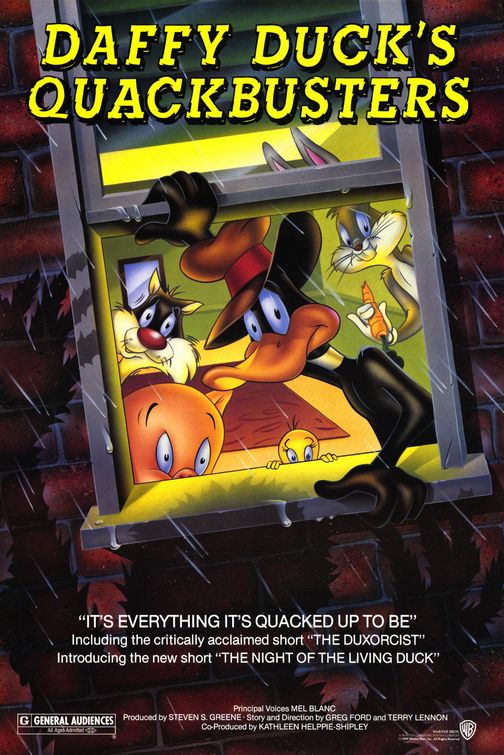
DAFFY DUCK’S QUACKBUSTERS
*** (A must-see)
Directed and written by Greg Ford and Terry Lennon
With Daffy Duck, Bugs Bunny, Porky Pig, Tweety Pie, Sylvester the Cat, J.P. Cubish, and the voice of Mel Blanc.
It seems more a matter of confusion at Warner Brothers than either poetic justice or business acumen that has denied this triumphant new cartoon feature a theatrical opening in Chicago, although it has recently become available here on video. After a limited if successful run in a New York theater last fall and several scattered theatrical play dates elsewhere in the U.S., Daffy Duck’s Quackbusters has entered the vast no-man’s-land of new features that are available for the most part only on tape, never having received the mainstream attention routinely accorded to other, mainly inferior, Hollywood releases.
Recycled Hollywood classics are very much in evidence right now, in a variety of forms, but this postmodernist conflation — consisting of nuggets from nine earlier Warner Brothers cartoons, two more-recent ones, and a generous amount of new material — displays a critical intelligence and a creative energy that were not apparent in such previous compilations as The Bugs Bunny/Road Runner Movie, The Looney, Looney, Looney Bugs Bunny Movie, Bugs Bunny’s 3rd Movie: 1001 Rabbit Tales, and Daffy Duck’s Movie: Fantastic Island. Read more
Commissioned (but never published) by the Guardian, circa 2005. A much-expanded version of this wound up as the final chapter in my book Discovering Orson Welles. — J.R.

When Will — and How Can — We Finish Orson Welles’s Don Quixote?

When Orson Welles died in 1985, he left many of his films unfinished. Each one was unfinished in a different way and for somewhat different reasons. To the despair of anyone who has ever tried to market his work, no two Welles films are ever alike, even the theoretical ones.
But his Don Quixote, which he owned himself, is distinct from the others, for a number of reasons —- apart from the fact that something calling itself the Don Quixote of Orson Welles was put together in 1992 by Spanish hack director Jesus Franco, who did more to mutilate and distort Welles’ material than anyone had ever done to The Magnificent Ambersons or Mr. Arkadin.
It remained an active project for almost the last three decades of Welles’ life. Starting around the early 70s, Welles jokingly planned to call it When Will You Finish Don Quixote? And the question we used to ask Welles we now have to ask ourselves — namely, how can we find closure? Read more











